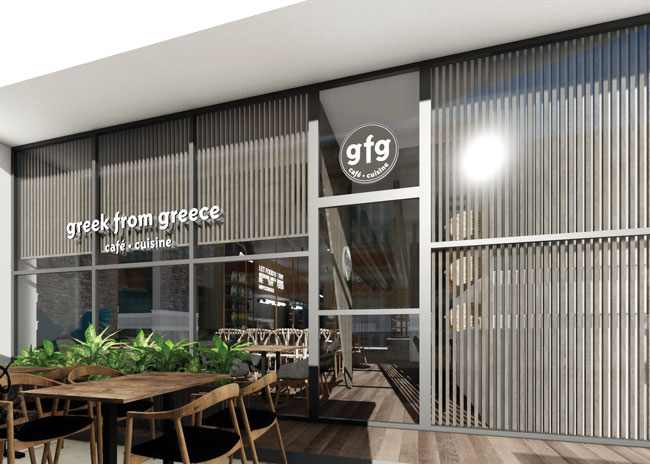Informed Decisions about Your Flooring Installation Can Ensure Success
 Lew Migliore Principal LGM & Associates an INSTALL Alliance PartnerNowhere does proper flooring installation matter more than in places where the floor is likely to take a beating. Restaurants represent some of the most complicated environments for specification and installation because of the number of factors working against the floor. Safety plays a critical role as you don’t want a lawsuit on your hands. Cost always becomes an issue and often a point of contention — a restaurant floor needs a quality product that will hold up under abuse, but owners or facility managers don’t always want to invest heavily in an area perceived as a commodity. Last, but certainly not least in importance, is the aesthetics. The floor can play a supporting or even leading role in the design and ambiance of a restaurant space, and it has to look good.
Lew Migliore Principal LGM & Associates an INSTALL Alliance PartnerNowhere does proper flooring installation matter more than in places where the floor is likely to take a beating. Restaurants represent some of the most complicated environments for specification and installation because of the number of factors working against the floor. Safety plays a critical role as you don’t want a lawsuit on your hands. Cost always becomes an issue and often a point of contention — a restaurant floor needs a quality product that will hold up under abuse, but owners or facility managers don’t always want to invest heavily in an area perceived as a commodity. Last, but certainly not least in importance, is the aesthetics. The floor can play a supporting or even leading role in the design and ambiance of a restaurant space, and it has to look good.
After more than 40 years in the floor covering industry, I’ve dealt with a multitude of floor covering problems including those related to manufacturing, specification, installation, performance, use and maintenance and more. Let’s just say I’ve seen shining examples of properly installed restaurant floors, but more often than not, I’ve seen things go terribly wrong.
Your Floor Can Make or Break You
As a restaurant owner, developer or facility manager, your charge is to protect the integrity of the investment. When you look at sheer size and square footage, the floor makes up a huge portion of the property for which you are responsible. So let’s start with delving a bit deeper into how a properly installed floor can make or break you.
Whether the floor is safe for both customers and employees can be impacted if there are seams involved such as with modular or broadloom carpet or sheet vinyl flooring. The installer must properly heat weld the seams so that they don’t come apart and become a tripping hazard. The substrate under the flooring product has to be level so that it doesn’t create imperfections that will only worsen with time. It also has to be properly prepared to prevent the introduction of moisture, which can result in unsightly spots and stains as well as catastrophic fails such as carpet coming unglued or wood floors buckling or cupping.
Aesthetics are everything, especially in hospitality where a customer’s dining experience is as much about the ambiance as it is the food. A stained, torn, or corroding floor is not only unsightly, but it’s unappetizing. Off-kilter floor patterns can also fail to hold up their parts in the architect or designer’s vision. A properly trained installer will make sure that the pattern is aligned and straight, looking the way it was intended in the design.
Every floor has a life expectancy, and it’s in your best interest to extend that life as long as possible. A properly installed floor will wear better, which is especially important in a restaurant environment that receives high pedestrian traffic, where tables and chairs are dragged across it and where food and drinks are regularly spilled.
Improper Is More Common than You Think
In a restaurant environment, more thought tends to go into the wall covering, lighting and amenities. The floor often becomes an afterthought and not an expenditure for which managers want to allocate too much money. Choosing the lowest-cost flooring product and the lowest bidding installer and then expecting the floor to hold up to demand is like ordering a chopped steak and expecting it to taste like filet mignon. You will be disappointed and out a pretty penny.
Unfortunately, improper specification and installation is more common than you would think. The number one problem causing flooring failures is the wrong products in the wrong place, but after that, the biggest problems are installation related.
People who may install based on the lowest price are often unaware of the proper prep the flooring requires to ensure it stays down and that it’s installed according to the manufacturer’s guidelines and industry standards. This is where working with a superior, certified contractor becomes critical.
Avoid Problems, Starting With the Installer
The most effective way to ensure a successful flooring installation is to work with a superior contractor. A failed flooring installation can cost up to ten times the original cost to replace when you factor in business interruption and downtime. In many cases, bad installations are the result of installers being unfamiliar with the products they are working with and lacking the installation knowledge necessary to properly install the flooring.
Certified installers will ensure that the installation is done correctly from the beginning and will stand behind their work. They will guarantee, preferably with a warranty, that it’s done right, and if it’s not, they will back up and correct it. You as the customer should expect nothing less.
When choosing an installer, follow these guidelines:
- Qualify the installers to make sure they have the experience and training.
- Have them demonstrate that they have the financial wherewithal to ensure the quality of their work, just as you would when you are procuring your food from your purveyor to get the best quality.
- They should be able to show evidence that they are trained, versed in all types of flooring and familiar with the types of products specified for the job.
- Better yet, they should be able to demonstrate an understanding of the products, manufacturer-recommended specifications, guidelines and standards.
- Know the guy. Trust is critical in any relationship, and you should feel comfortable communicating your needs and expectations with your installer.
Other Ways to Up Your Chance of Success
- Maintenance: Having an appropriate maintenance plan cannot be underlined enough, and it should not be considered an option for any restaurant owner. Restaurant floors are subjected to oils, grease, alcohol and food more so than any other environment. Considering that a restaurant is legally required to maintain a certain level of cleanliness, a maintenance plan should be established and budgeted for before the floor is even installed and the doors to the place are opened. A flooring installer usually offers maintenance as an ongoing service or can recommend a reputable, local business that does.
- Get the right product in the right place. As commercial spaces go, restaurants have a wide range of spaces meant for different purposes, and the floor underfoot must be specified to meet that application. For example, lobby spaces host people walking in off the street, so they must have a high level of water resistance and a high coefficient of friction to prevent slips and falls due to rain, snow or ice and contaminants. This space is also charged with making a great impression. The dining area must also be beautiful and safe but is more likely to experience food stains and abrasions from tables and chairs. The bar has a high presence of moisture and needs to also prevent falls. In the kitchen, only the toughest and most resilient floor will survive. A different flooring material should be recommended for each of these scenarios, and a certified contractor can help in this decision process.
You want your floor to work for you, not against you. But remember, a floor doesn’t have any value until it’s installed and installed correctly. Making informed decisions up front about the products you use, the installer you work with and an in-place maintenance plan are the best ways to extract the full value of that floor. Get it done right the first time, and your floor can be a key part of your restaurant’s success.



